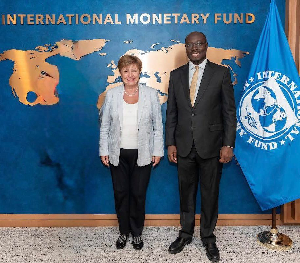In February Spotlight visited the northern reaches of rural KwaZulu-Natal to unveil shocking testimonies about the province's reported child hunger, which was up to four times higher than other provinces. It's now July, and while the country finds itself in the middle of a global pandemic, little has changed for the community of Jozini in the Umkhanyakude district.
"The problem is still hunger," says Nokuthula Dladla, project manager of Siyaphambili Qondile, a Jozini based non-profit organisation. It's been getting worse and worse, she says.
"It's been very difficult. The state of the virus is growing and around Jozini it's been hectic. Those people who are dependent on selling some items [like fruit or vegetables in town] have quit to stay at home trying to prevent COVID-19."
Dladla lets out a deep sigh. "We are trying," she says. "We are trying. We've been doing a garden to supply some vegetables to some of the families, but we don't have enough funds and even here in the office the soup kitchen was closed [in March when lockdown started]."
The soup kitchen allowed the organisation to feed 15 children each day, but once the hard lockdown started, this program came to a grinding halt.
Everyday families and children come to Siyaphambili asking for help, but Dladla says that the organisation just doesn't have the resources to help as much as what's needed. "We sit down with them and tell them we have difficulties, but it's beyond our hands because we don't have money."
In June, the organisation received a large donation of e'Pap, a micro-nutrient rich, soya-based porridge, that they distribute to over 112 families in the community. This e'Pap, along with vegetables from a small garden, are the only support the organisation can offer right now.
While Spotlight spoke with experts in child health and nutrition, we also asked children from Red Cross Children's Hospital's radio station, 'by and for children' called RX Radio for their views.
"There are many people that are oblivious that child hunger and malnutrition are actually happening here in South Africa," says Yusrah, a 12-year-old reporter from RX Radio. "I feel a bit angry and disappointed in the government because this issue has not only [happened now], maybe there's been more cases of malnutrition during the COVID-19 pandemic, but also this has been going on for quite a long time."
Young children falling through the cracks
Spotlight previously reported that the NIDS-CRAM survey revealed that 1 in 7 households reported a child going hungry within the last week. While this indicates how hunger has increased, Lori Lake, from the University of Cape Town's Children's Institute (CI), says this doesn't speak to the levels of malnutrition.
Lake says that this information comes amidst pre-existing concerns about South Africa's high levels of stunting (reportedly 27 percent, or just over 1 in 4 young children), and severe acute malnutrition (SAM), both of which are likely to increase due to economic recession and the prolonged lockdown.
"The concern is really young children as it is children under the age of two who are the most vulnerable to SAM and stunting rates peak in children under three. We also know that the uptake of the Child Support Grant (CSG) is particularly low in the first year of life, with just over one-third of poor children not receiving a grant. So there is an urgent need to support these - the most vulnerable - children who aren't covered by other safety nets such as the National School Nutrition Program and ECD subsidy," she emphasizes.
"It makes me sad, because no child should ever suffer from hunger," says 16-year-old Talita, co-host of Zaahra's Kitchen on RX Radio. "In the Children's Bill of Rights, it states that children have the right to food, every child has the right to food and if they cannot afford to buy some food, there should be people willing to lend a helping hand."
Nutrition is paramount for young children
For children under the age of 2, poor nutrition can have permanent consequences. Dr Chantell Witten, a lecturer at the University of the Free State's Faculty of Health Sciences tells Spotlight that these children are at risk of higher rates of stunting and obesity, lower cognitive development and delayed milestones and long term health issues like diabetes, hypertension and cardiovascular disease. Witten is Nutrition Lead for the South African Civil Society for Women's, Adolescents' and Children's Health (SACSoWACH, a civil society group advocating for the health of newborns, children, adolescents and mothers).
"Child malnutrition casts a long shadow into adulthood," she says. "While hunger is a major concern and providing food is paramount to supporting nutrition adequacy, we need to focus on supporting hungry pregnant mothers, who's growing infants are under threat given the mothers' poor nutritional status."
Emphasis on breastfeeding and maternal care
Data from NIDS-CRAM highlighted that antenatal and follow-up visits by mothers had decreased during lockdown, raising concerns for the health of the mother and child. However, the survey did not have information about breastfeeding, which Witten hopes to see included.
"Breastfeeding is food security and a safety net for children. Change in breastfeeding rates is also indicative of coping mechanisms to shield children. More breastfeeding and breastfeeding [for longer than normal] is associated [with] poverty," she says.
Dr Lesley Bamford, Acting Chief Director for Child, Youth and School Health at the National Department of Health, says the department is concerned that exclusive breastfeeding (EBF) rates may decrease during this time. "Breastfeeding provides a sustainable source of food for infants and young children below 2 years. Healthcare services aimed at supporting mothers to breastfeed are strained as a result of COVID-19. Many mothers are not visiting health facilities due to fear of being exposed to [the virus] and they may have a fear to transmit the virus to their infants," she says.
"There is no evidence to suggest that COVID-19 can be transmitted through breast milk. The benefits of breastfeeding far outweigh the risks and new mothers are encouraged to exclusively breastfeed for the first six months of their child's life and as long as they are able to thereafter," adds Bamford.
According to the latest South African Demographic Health Survey from 2016, the country is behind on their target for EBF rates, with only 32 percent of children being breastfed only for the first six months. "The global target for EBF is 50 percent by 2025," says Bamford.
"If moms have decreased health seeking behaviour, it has serious negative consequences for children," says Witten. "These children are at risk of higher rates of disease and lower opportunities of reaching their fifth birthday. The top three causes of death among children in South Africa are diarrhea, respiratory tract infections and SAM. All preventable causes, but many of them reflect poor health seeking behaviour and direct relations to malnutrition. Thirty percent of children who died in hospital have had malnutrition as an underlying cause."
Changing the narrative on hunger and nutrition
While comments made earlier this year by Professor Glenda Gray, President of the South African Medical Research Council (SAMRC), about increasing SAM rates at a prominent Johannesburg hospital was disputed by the Minister of Health and made headlines, Witten says they raised valid concerns.
"You could see with Professor Glenda Gray and [Dr] Zweli Mkhize, the argument was about the [SAM] numbers, not the principle, not that children were going to be paying with their lives for this lockdown," she says. "Crisis also brings opportunity, and for me, nutrition needs to grab this opportunity because if it wasn't for Gray, we would not be talking about nutrition. I'm so glad there was that whole debacle because it raised the issue beyond food and hunger, and hunger is not nutrition," says Witten. "[Children] can eat food but [they'll] land up in hospital when the nutrition is not in place. I don't think people get that."
SAM and hospitalization for malnutrition is just the tip of the iceberg, she adds. Last year, just under 1 200 children died in hospital from SAM, but many more children suffer from long-term consequences of malnutrition, like stunting, but these are not counted, she says. It is also not known how many children die from SAM outside of hospital.
"We seemed obsessed with counting death and not responding to the suffering along the line which is affecting the vast majority of children. Children who are chronically malnourished and compromised learn less, engage less and are at a higher risk of dying. At [a] 27 percent [stunting rate], we are talking millions of children who are the unseen silent victims of malnutrition. These children will be less likely to reach their full potential," she says.
"Every article talks about the stunting rate, but not every article says that these same children are the ones who are less likely to complete high school, less likely to get good jobs, less likely to earn enough salary. They will be trapped in poverty. The whole nutrition poverty cycle is stunting, but it's a one-liner in a thousand word article. It has huge consequences," emphasizes Witten.
The malnutrition-poverty trap
Witten explains that malnutrition was one of the main reasons for the CSG, but the grant was not enough to lift children out of poverty and address poor nutrition, an issue also raised by NIDS-CRAM researchers.
"Those that work in the social protection realm need to take cognizance that during the pandemic we have had this grant, but we all knew the grant was never enough because it's below the poverty line. So what were we expecting," she says.
Witten calls the CSG programme potentially one of the largest "safety nets" in the world, but says it's not enough because it doesn't allow families to buy enough food". "Maybe that R440 is keeping children out of hospitals [for SAM], but it's not keeping [them] out of ill-health, because it's not able to get them to optimal nutrition or optimal health. That's the real conversation we should be having. It's just enough to keep you off the brink, but you will never be healthy," she says.
"I think if we think of the [roughly 13] million children that are on the CSG it's [13] million lives that we are holding back, we are literally constraining them, and I think we need to talk about it in that way," urges Witten.
Saadiq (15), RX Radio's host of Talking Politics and Jazz agrees with Witten. "I think the extra money [people] received for grants is too little as food items are very expensive and shop owners increased their prices during the lockdown period," he says.
"I feel extremely sad as I come from a poverty stricken community," he says. "I see hunger happening every day where people go without food on a daily basis. They walk from door to door to beg for food. It is very disturbing to see malnutrition happening in our country."
Failed attempts to reach poor children
"What is inexplicable and, frankly, inexcusable, is that the government has failed to make use of its best existing mechanisms to reach poor children. We have a well-established social protection system that could have provided an ideal vehicle to reach children easily and protect them from the worst effects of the economic impact of lockdown," says Katharine Hall, a Senior Researcher with the Children's Institute.
Agreeing with Witten, Hall acknowledges that the CSG is well below the poverty line, but that the programme succeeds at targeting poor households.
Civil society groups and researchers previously called for the CSG to be increased by an additional R500 per month per child. "Models showed that increasing the CSG would be the quickest and most effective method to distribute money to almost a third of all households, including the most vulnerable and many of those that relied [on] informal sector income, where the impact of lockdown were most severe," says Hall.
But, government created a new caregiver grant instead.
"This is despite the fact that modelled estimates showed that if the R500 CSG increase were attached to the caregiver rather than each child's grant, this would leave two million more people (mainly women and children) below the food poverty line than would be the case if the increase were attached to every CSG," explains Hall.
Presumably, Hall says the decision was based on a strategy to save money, as it cut the number of additional payments by nearly half while also excluding caregivers from being eligible for the COVID-19 Social Relief of Distress grant. "The notion of saving money while children starve is ludicrous and obscene," she says.
"Some of the [families] didn't have any [food], they just rely on this e'Pap," says Dladla. "It's very painful because children are suffering, if we look at some of them they have the symptoms of malnutrition now."
Nothing new, but getting worse
Child hunger and malnutrition have plagued the most vulnerable in South Africa for decades - long before the COVID-19 pandemic and long before the end of apartheid in 1994. With the release of the first set of findings from the National Income Dynamics Study - Coronavirus Rapid Mobile Survey (NIDS-CRAM) last week, these problems are now getting much worse as a result of the pandemic and the lockdown. What is not clear, however, is how young children are being affected and what needs to change immediately to save their lives.
"I know that social grants have been given to underprivileged areas but I think that in addition to that, food parcels or vouchers could be sent to underprivileged households because sometimes the adults don't use the money reasonably or they don't use the money to benefit the needs of their children," adds Yusrah.
Witten proposes the implementation of a conditional food voucher for R500 per month that could be used to redeem a nutrition pack (a specially designed nutrient-rich food parcel) which would mean that children could get adequate nutrition each month.
"If we top up [the CSG] with R500 and that can only be used to buy nutritious food, that is the conversation that not many people are willing to engage in because it will take a lot of political will and it's a huge cost," she says.
"This time with the pandemic, our narratives are changing," says Witten. "The real crux of the matter is that we have been researching and working in this field [and] we have not pushed the envelope to get responses. The pandemic has forced us to take accountability not only as the government but also as researchers," she says.
"We have been very polite and accepting of the breadcrumbs when we know we need to get the whole bread. We're not even getting a slice, we're just getting the crumbs."
Government's response and plan of action
Responding to Spotlight, Bamford said that the findings of the NIDS-CRAM survey were not unexpected,. It highlighted challenges that can have serious consequences for the health and development of children, particularly young children.
"Failing to address malnutrition will continue to negatively impact child health, education and subsequent socio-economic status. As the causes and consequences are multi-sectoral, the fight against malnutrition requires an integrated response in order to address the social and economic burden of malnutrition," she says.
Bamford says all provinces have been requested to have response plans to address the prevention and management of acute malnutrition.
These plans will focus on supporting mothers to continue breastfeeding and encouraging mothers and caregivers to seek care for their children at primary health facilities (PHC) particularly for immunizations and growth monitoring.
The plans must ensure that the nutritional status of any child under the age of five admitted to hospital is adequately assessed to identify malnutrition. Further, children who are identified with acute malnutrition are to be managed at PHC facilities or hospitals. "Community health workers are tasked with identifying children with acute malnutrition at household level," she adds.
Bamford says that provincial plans must include working with other sectors to improve household food security and ensuring that all eligible households access social grants.
Africa News of Friday, 24 July 2020
Source: allafrica.com













